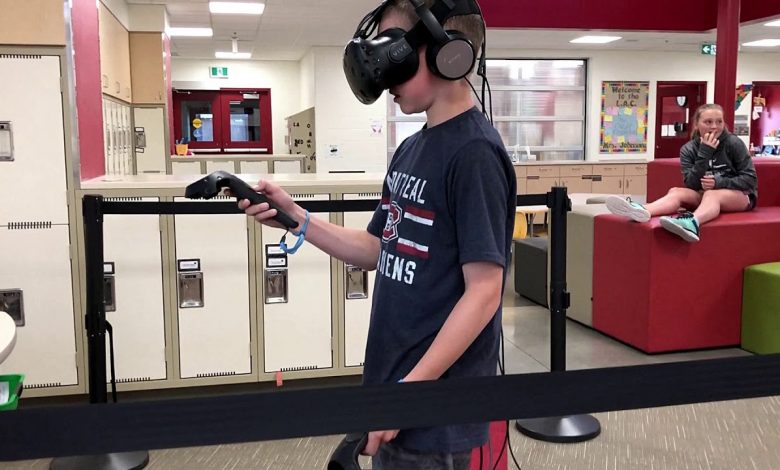
by Kyle Gagnon
I still remember my first virtual reality experience and it’s one of the reasons I love introducing people to VR.
The first few minutes are disorienting before the confusion about the disconnect between your physical and perceived experiences adjusts to delight. It’s fun to watch people during their first VR experience – their brow is a little furrowed and their body movements tentative until they become entranced by the new world around them.
When I experienced VR for the first time, it was because I had stumbled into a demo by chance. Call it luck or fate but moments after strapping on the headset, I knew I had stepped into a whole new world and had found my path. I was immediately excited for its potential beyond the world of gaming. The immersiveness of the experience is what makes VR captivating and why it’s educational potential is so great.
Not many people get to introduce their clients to new worlds everyday – but I do! Some days I get to show people far flung corners in the world in Google Earth or watch them create works of art in Tilt Brush.
Other days I get to watch someone afraid of heights tentatively try my fall protection program and discover why it’s an effective tool to supplement textbook learning. It makes sense in class to not fall off the roof – but when you can suddenly see the height, the information is memorable! Despite reminding her that that it was just a virtual experience, I couldn’t coax this user to look over the edge and experience the falling sensation – instead, she took a big step back, happy to feel the basement carpet underfoot.
As early classroom adopters are discovering, virtual reality is a valuable opportunity to supplement educational materials and gamify learning.
Much like how that user experienced the simulated fall training, students can connect with their curriculum in a new way. Learning about a different region of the world in social studies class? Pop into Google Earth. Students from Canada’s prairie regions might not be able to feel the cold air but with VR they can come as close as they can to the summer lichens and poppies of Canada’s arctic tundras without getting on a plane.
Virtual reality allows artists to create in multiple dimensions, move through their creations, and experience a wholly unique way of perceiving proportion and art. When combined with tools like 3D printers, MakeVR and similar programs make it possible for students to build models within an intuitive CAD engine.
For now, most schools are sharing one or two devices for all of the students. Increasingly, this is being met by programs and devices that support multi-platform experiences; while students take turns using the VR device, the rest of the cohort can experience the materials on complementary mediums like tablets. Lifeliqe, an industry leader in virtual and augmented reality curriculum deliberately builds their content to not only support but shine in mixed device classrooms.
Gamifying the educational experience deepens understanding of material, improves recall during exams, and encourages engagement and participation. Although adding new technologies into the classroom and developing additional curriculum can be an intimidating process, it’s a worthwhile learning curve.
At Don Campbell Elementary, an early adopter in Alberta, almost all students are eager participants. “It’s a huge, engaging tool that we can use to support topics that might not tend to be the most exciting,” explains Colin Christensen, a grade 5 teacher and leader for their VR setup. He’s found it particularly valuable for geography and science.
Christensen shared a science experiment that displayed the benefits of tools like VR and robotics: “when we talked about the states of matter in science–solid, liquid and gases–I put three hula hoops on the ground, where one was solid, one was liquids and one was gas, and [put robotics sets in there with adjusted speed settings to reflect that] solids hardly move, liquids are a little faster, and with gas they’re super fast and they can hardly stay in the hoop. Anytime I brought that [concept] up again…kids could tie it right back to it because they had experienced that…”
For now, the biggest holdup is the price point and bottlenecks in users. Early adopters are managing bottlenecks with creative scheduling and cycling cohorts of students through the system and through programs like Lifeliqe where students can follow along even if they’re not in the virtual reality system.
With equipment prices on a downward trend and launches of standalone headsets on the horizon, it’s clear that virtual reality will soon become increasingly accessible to classrooms. Demand for educational content is high, both within the k-12 environment and industry specific training in areas like mechanics, anatomy, fall training and more.
A whole new world in education is now reality.




